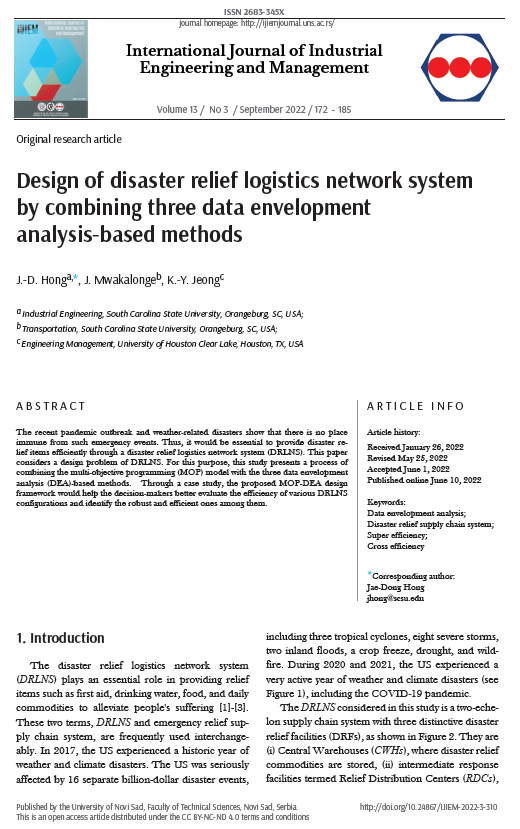Design of disaster relief logistics network system by combining three data envelopment analysis-based methods

Published 2022-09-30
abstract views: 310 // FULL TEXT ARTICLE (PDF): 0
Keywords
- Data envelopment analysis,
- Disaster relief supply chain system,
- Super efficiency,
- Cross efficiency
How to Cite
Copyright (c) 2023 International Journal of Industrial Engineering and Management

This work is licensed under a Creative Commons Attribution 4.0 International License.
Abstract
The recent pandemic outbreak and weather-related disasters show that there is no place immune from such emergency events. Thus, it would be essential to provide disaster re- lief items efficiently through a disaster relief logistics network system (DRLNS). This paper considers a design problem of DRLNS. For this purpose, this study presents a process of combining the multi-objective programming (MOP) model with the three data envelopment analysis (DEA)-based methods. Through a case study, the proposed MOP-DEA design framework would help the decision-makers better evaluate the efficiency of various DRLNS configurations and identify the robust and efficient ones among them.
Article history: Received (January 26, 2022); Revised (May 25, 2022); Accepted (June 1, 2022); Published online (June 10, 2022)

